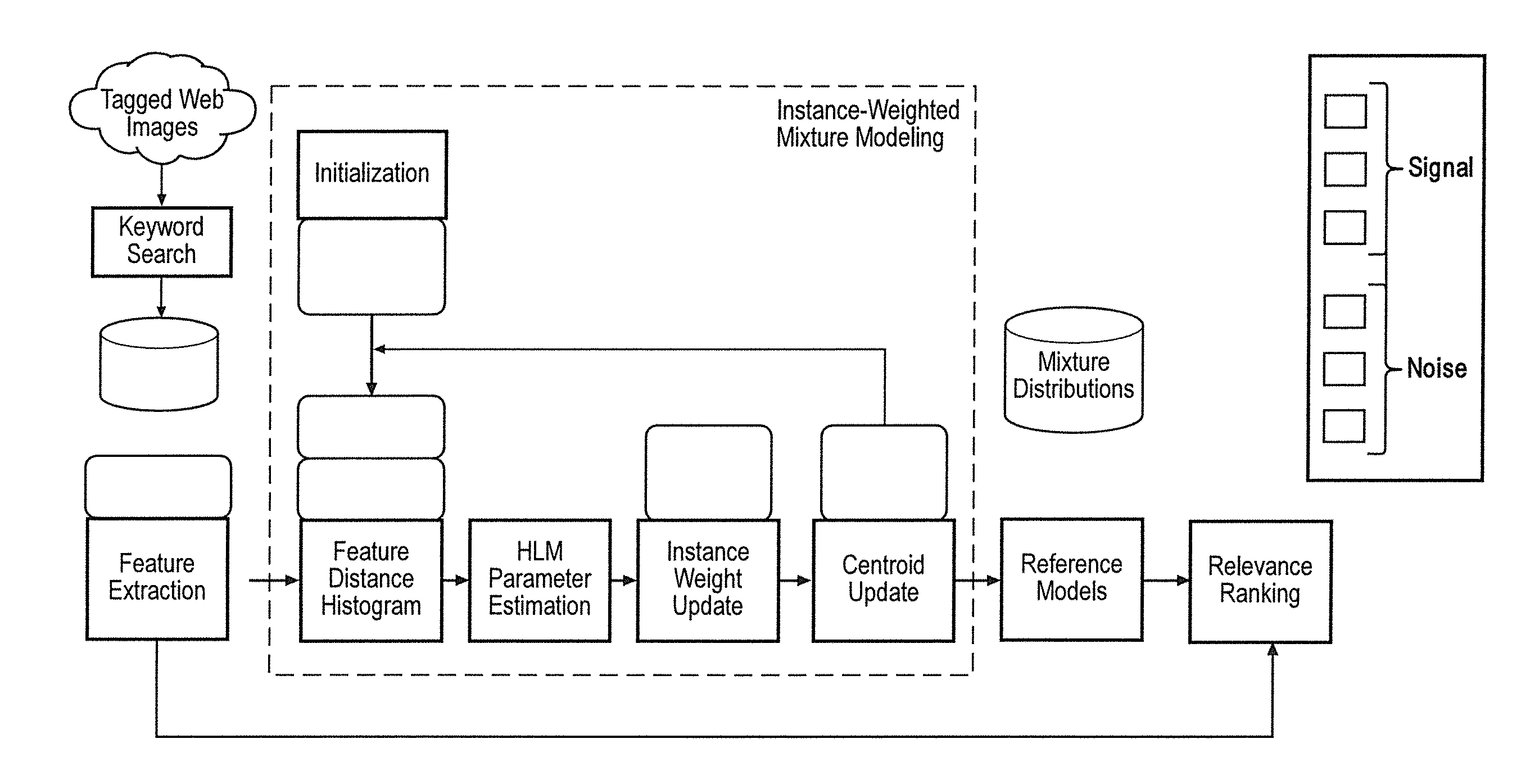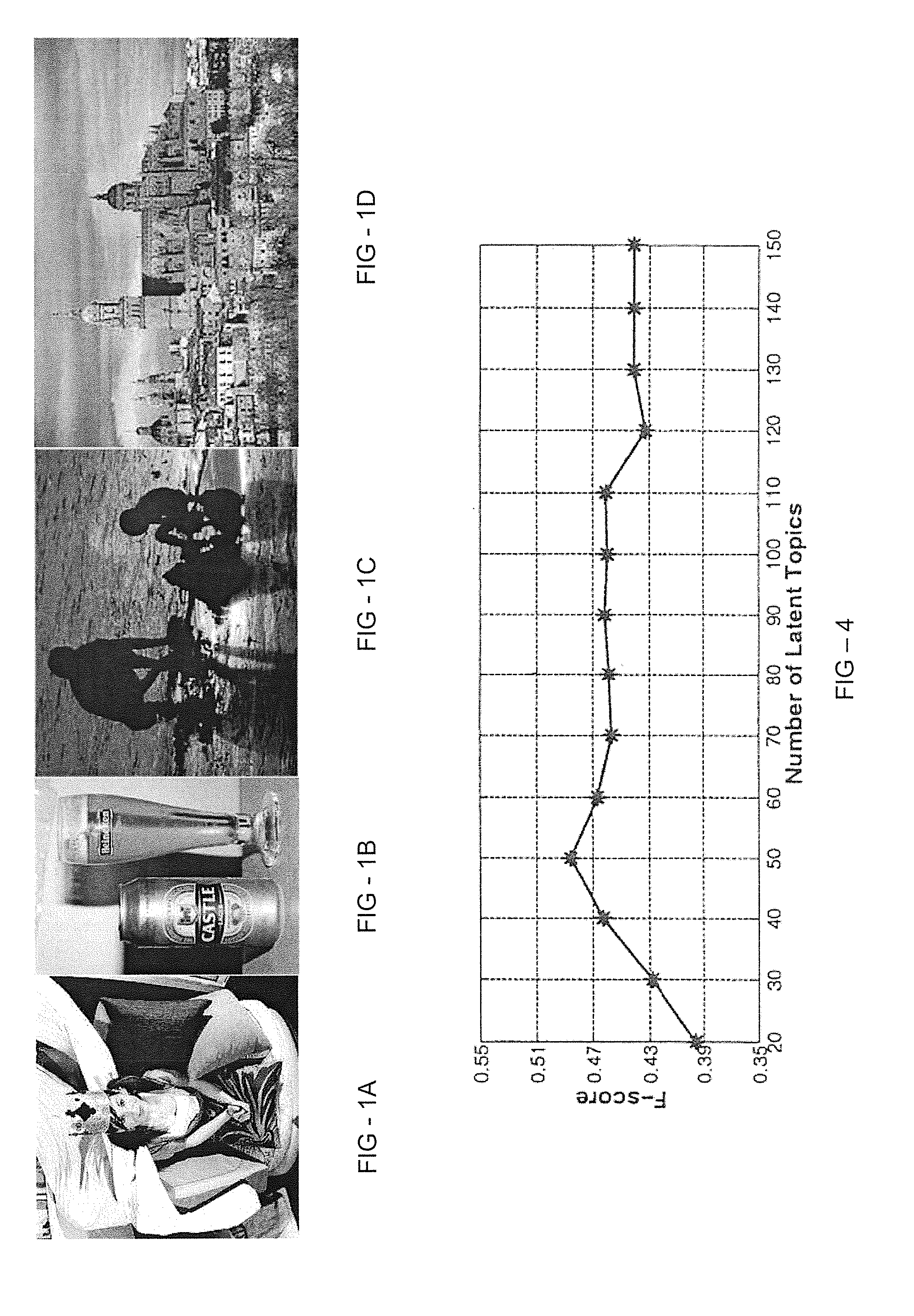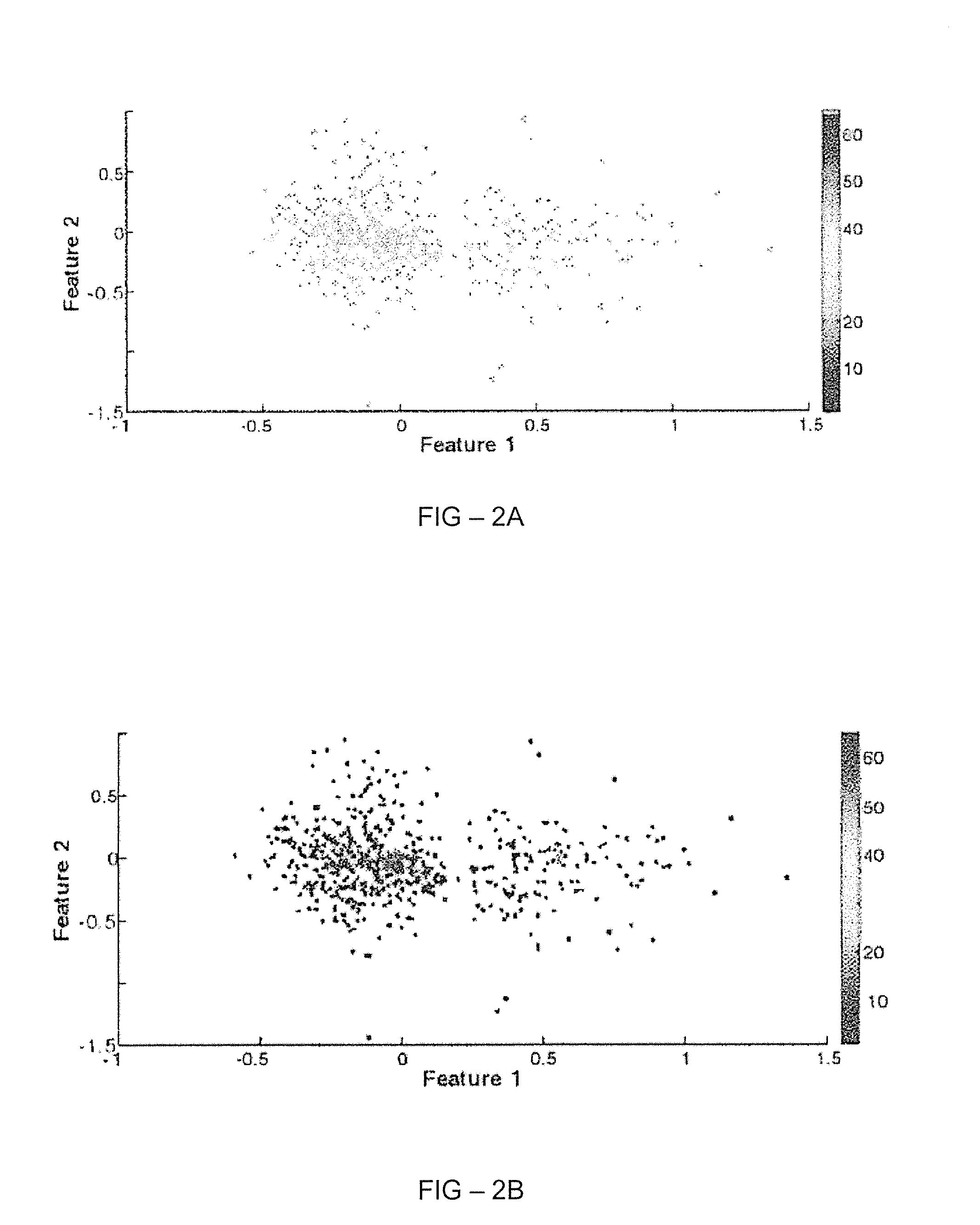Instance-weighted mixture modeling to enhance training collections for image annotation
a mixture modeling and training collection technology, applied in the field of automatic image annotation, can solve problems such as prone to selection noise, parameters that cannot be robustly determined, and causal dilemmas
- Summary
- Abstract
- Description
- Claims
- Application Information
AI Technical Summary
Benefits of technology
Problems solved by technology
Method used
Image
Examples
Embodiment Construction
[0046]Section II discusses related work. Section III and Section IV present the instance-weighted mixture modeling algorithm and its properties, respectively. An overall framework to use ARTEMIS for training image annotation systems is presented in Section V with experimental results in Section VI. We conclude in Section VII with a note on future work.
II. RELATED WORK
[0047]This section presents the specific research on training data selection from noisy user-tagged images as well as a brief review of robust statistical learning. The discussion on instance-weighted clustering and entropy regularization is deferred until Section III-C to contextualize our approach.
[0048]Manual Selection:
[0049]Image annotation research has historically leveraged smaller but high-quality datasets created by rigorous manual inspection of images. Some newer approaches channel human efforts by engaging game-like interfaces and click-through data analysis. Manually verified images can also be used to bootst...
PUM
 Login to View More
Login to View More Abstract
Description
Claims
Application Information
 Login to View More
Login to View More - R&D
- Intellectual Property
- Life Sciences
- Materials
- Tech Scout
- Unparalleled Data Quality
- Higher Quality Content
- 60% Fewer Hallucinations
Browse by: Latest US Patents, China's latest patents, Technical Efficacy Thesaurus, Application Domain, Technology Topic, Popular Technical Reports.
© 2025 PatSnap. All rights reserved.Legal|Privacy policy|Modern Slavery Act Transparency Statement|Sitemap|About US| Contact US: help@patsnap.com



